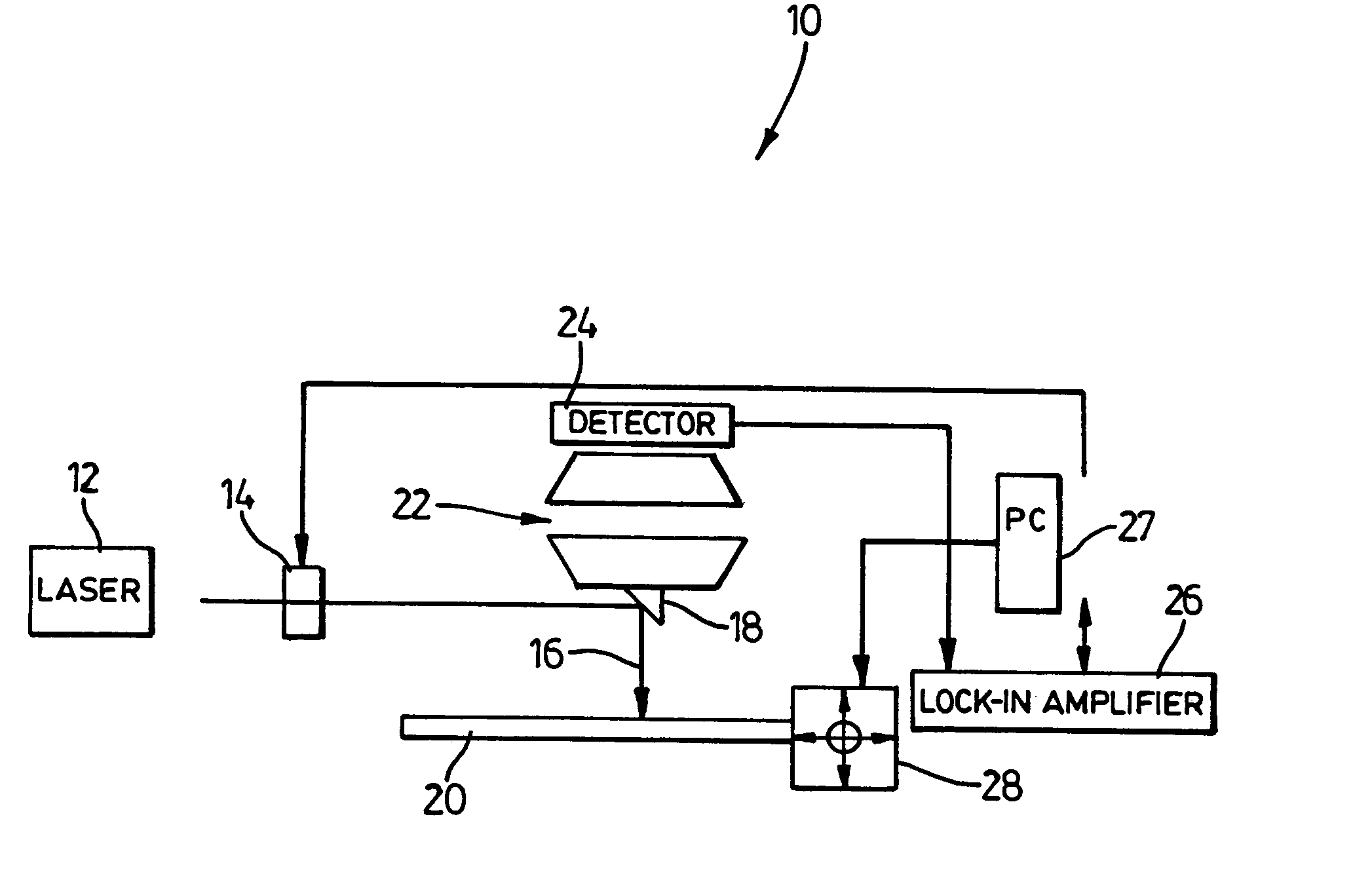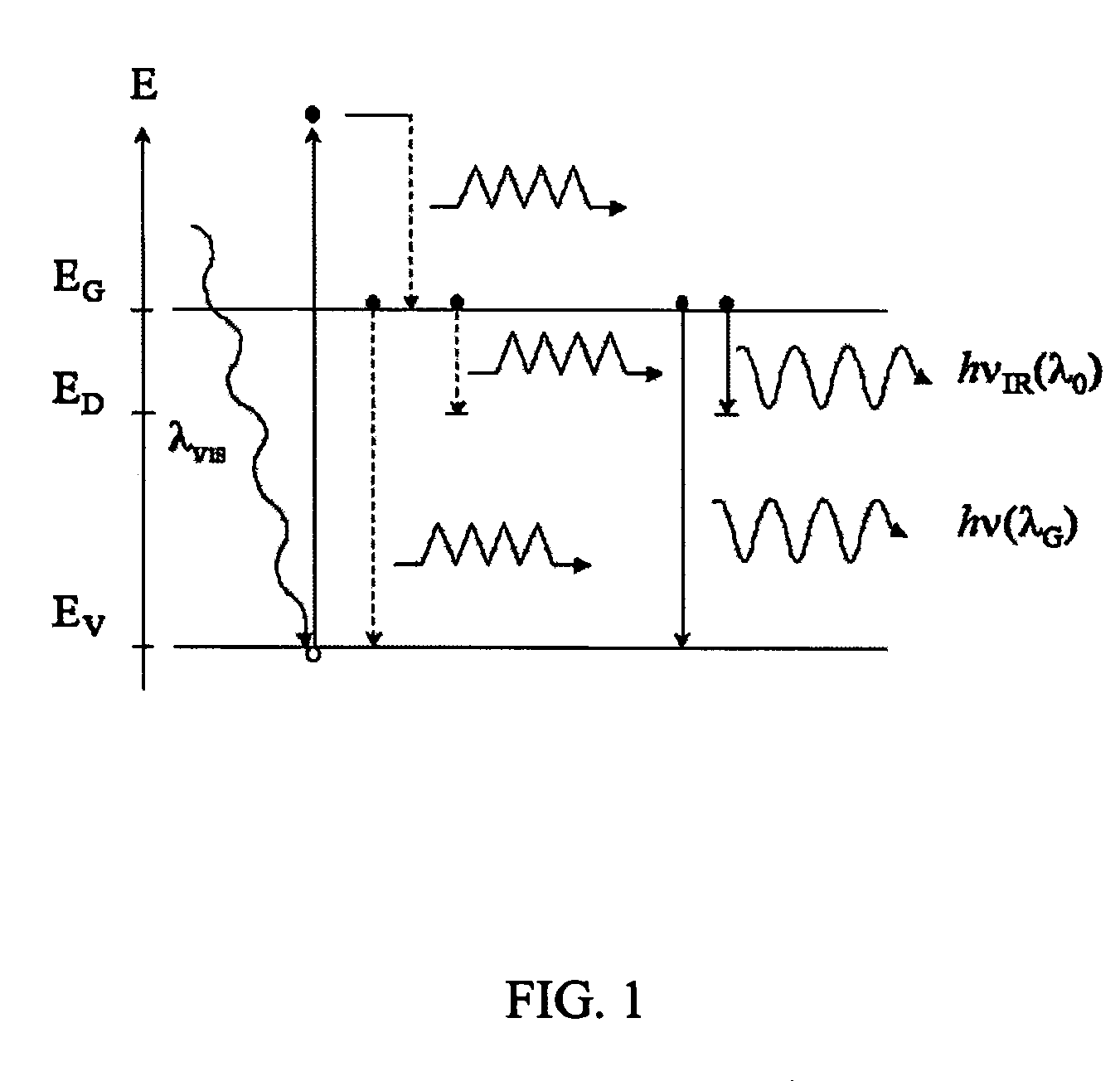Method of photocarrier radiometry of semiconductors
a technology of semiconductors and radiometry, applied in the field of metalological methodologies and instruments, can solve the problems of inability to accurately predict the frequency of the scan signal, early measurements reported without regard, and the interpretation of the ptr signal and computational difficulties, etc., to achieve the effect of reliable reliability, simplified theoretical fit to frequency-scan signals, and high accuracy
- Summary
- Abstract
- Description
- Claims
- Application Information
AI Technical Summary
Benefits of technology
Problems solved by technology
Method used
Image
Examples
Embodiment Construction
A) Apparatus
i) Single-Ended Photocarrier Radiometric Instrument
[0046]A schematic diagram of a first embodiment of a novel single-ended photocarrier radiometric instrument for laser PCR for semiconductor characterization is shown at 10 in FIG. 3. The excitation source is a laser 12 capable of producing photons of energy greater than the bandgap of the sample material (hv>EG). An acousto-optic modulator 14 is used to modulate the laser emissions resulting in a harmonic energy source or beam 16 that is directed using mirrors 18 and focused onto the sample 20. A pair of reflecting objectives or other suitable infrared optics, such as two off-axis paraboloidal mirrors, or one paraboloidal mirror collimator and a focusing lens 22 are aligned with the focal point coincident with that of the laser beam and used to collect emitted IR photons from the sample. The collected IR emissions are focused onto a detector 24 after being passed through a filter with a narrow spectral window that ensure...
PUM
| Property | Measurement | Unit |
|---|---|---|
| wavelength band | aaaaa | aaaaa |
| power | aaaaa | aaaaa |
| power | aaaaa | aaaaa |
Abstract
Description
Claims
Application Information
 Login to View More
Login to View More - R&D
- Intellectual Property
- Life Sciences
- Materials
- Tech Scout
- Unparalleled Data Quality
- Higher Quality Content
- 60% Fewer Hallucinations
Browse by: Latest US Patents, China's latest patents, Technical Efficacy Thesaurus, Application Domain, Technology Topic, Popular Technical Reports.
© 2025 PatSnap. All rights reserved.Legal|Privacy policy|Modern Slavery Act Transparency Statement|Sitemap|About US| Contact US: help@patsnap.com



